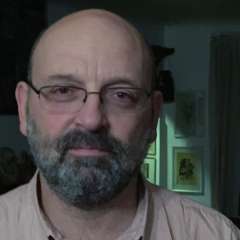In his first collaboration with the Royal Scottish National Orchestra, Jörg Widmann proved again to be a true musical polymath, one of the very few active today. He started by playing the double role of soloist and conductor in Mozart’s Clarinet Concerto, the last instrumental concerto that the composer completed, just two months before his death. Widmann must have played this concerto innumerable times during his career. Nevertheless, the freshness and enthusiasm he brought to his approach was undiminished. Occasionally hopping and twisting, he played as if the amazing mixture of sunshine and clouds, of insouciance and pensiveness ingrained in the score was a new discovery for him, a find that he burned to share with his (absent) public. There was tenderness but nothing remotely sentimental in his rendition of the Adagio, an as perfectly polished gemstone as any of the piano concertos’ middle movements. The contrasts in the finale were a tad too ironed out, but the overall playing in this beautifully shaped sonata-rondo form was glowing and utterly unaffected. Widmann rarely used his left hand to encourage an ensemble that seemed overly cautious and rarely stirred by the soloist’s enthusiasm.
His conducting skills were fully displayed in the other orchestral piece of the evening, Mendelssohn’s Symphony no. 5 in D major. Leading without a baton, with gestures that were eloquent without being elegant, Widmann conveyed with clarity what he wanted to achieve in terms of dynamics or bringing out certain inner voices. Composed in 1830 in honor of the 300th anniversary of the Presentation of the Augsburg Confession, the symphony was later regarded as “a piece of juvenilia” and repudiated by its author. Believing that, in the post-Beethoven's Ninth world, a symphony’s last movement can be its highpoint and not just a happy ending, he based his Finale on Luther’s hymn Ein feste Burg ist unser Gott (A mighty fortress is our God), thus musically illustrating the victory of Protestantism over Catholicism. The conductor treated the chorale-like music with due solemnity, but, at the same time, paid special attention to the slow first bars and the gradual introduction (first by the solo flute) of the elements of the chorale. Luther’s hymn is not the only quotation in the symphony. In the first movement Mendelssohn evokes the “Dresdner Amen” motif, played sotto voce by the strings and overwhelmed by a display of brass might. The RSNO musicians performed with Beethovenian-inspired fervor the ensuing Allegro con fuoco and they handled the unheroic, lyrical and discreet music of the inner movements with evident gracefulness.
When he started working on the centerpiece of the program, his Fantasie for solo clarinet, Widmann was even younger than Mendelssohn had been when he conceived the symphony much later (and erroneously) labeled as his Fifth. This brief score is freer and less burdened by the need to respond to several centuries of musical history as some of Widmann's later compositions are. With his amazing virtuosity and variety of tones, the clarinetist and composer of these (in his words) “dialogues of different people in close proximity in the spirit of the commedia dell'arte” transported listeners in what seemed to be a small Venetian campo where life-time neighbors are seriously arguing about nothing of significance.
This performance was reviewed from the RSNO video stream




